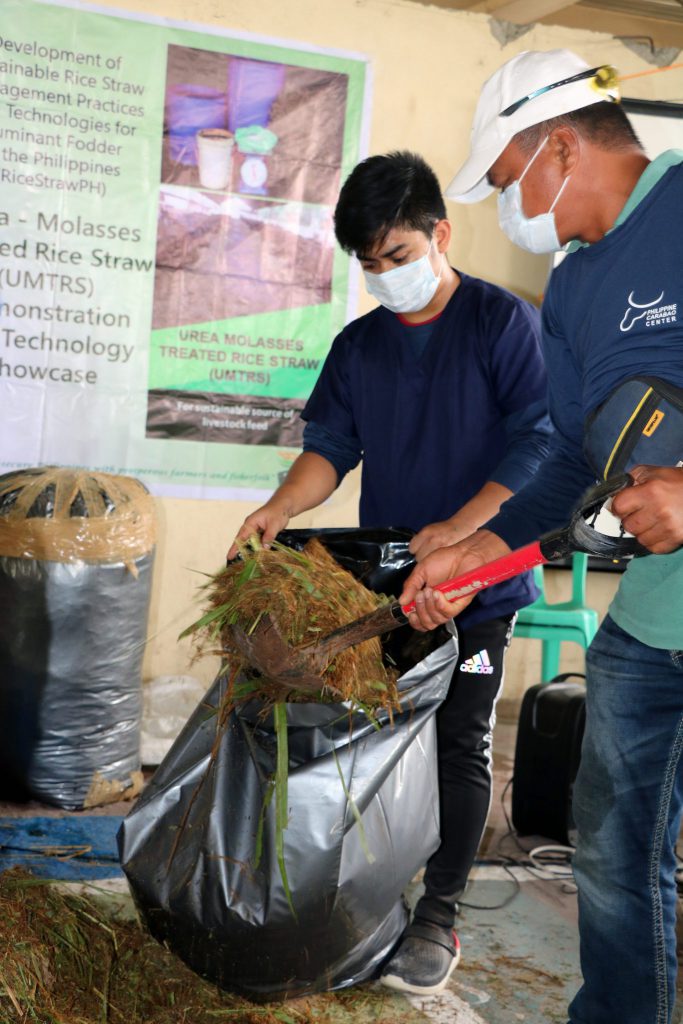Farmers and livestock raisers from various towns in Ilocos Norte attended a techno-demo titled “Enhancing Feeding Management Practices of Ruminant Raisers: A Urea-Molasses Treated Rice Straw (UMTRS) Demonstration and Technology Showcase” held in Marcos, Ilocos Norte on January 30, 2020.
The techno-demo is part of a project titled “Development of Sustainable Rice Straw Management Practices and Technologies for Ruminant Fodder in the Philippines” (RiceStraw PH), which is a collaboration between the Department of Agriculture-Philippine Carabao Center (DA-PCC), International Rice Research Institute (IRRI), and Philippine Rice Research Institute (PhilRice). The project is funded by the DA-Bureau of Agricultural Research (DA-BAR).
Participating farmers came from the towns of Marcos, Currimao, Dingras, Solsona, Nueva Era, Banna and Pinili and the City of Laoag.
It is a common knowledge that rice straws are being burned after harvest either because it is difficult to collect, it has been the practice for a long time, or farmers don’t have enough knowledge on the use and benefits of rice straws. This project highlights not only the economic benefits that can be derived in utilizing the rice straws, but also the positive environmental impact of not burning them.
Dr. Daniel Aquino, center director of PCC at Central Luzon State University (PCC@CLSU) and study leader gave an overview of the project and also discussed the importance of rice straw as animal feed. He also presented the needed materials and discussed the step-by-step preparation and efficient utilization of the UMTRS.
The following materials are needed for the mixture to make a 100 kg UMTRS: 4.40 kg urea, 4 kg molasses, and 91.6 kg water. Simply dip the rice straws (preferably chopped) in the mixture. Then put it in a drum or in a silage bag, making sure that it is compact before sealing it.
The UMTRS can be fed directly to ruminants 30 days after ensiling. It ensures higher milk production for lactating animals, improved weight, and additional nutrient value.
The participants, themselves, divided into two groups and guided by PCC personnel, prepared the UMTRS during the hands-on activity. After which, they were taught on the right way to ensile and seal the silage bags.
Participants were also taught on how to store rice straws by using the bailing machine or an improvised stationary wooden bailer.
Utilization of the UMTRS as an ingredient of the Total Mix Ration (TMR) was also demonstrated.
The adoption of the UMTRS technology will benefit cooperatives with farmer-members, agricultural entrepreneurs, livestock producers and extension workers, as it ensures additional income and sustainable source of livestock feed.

